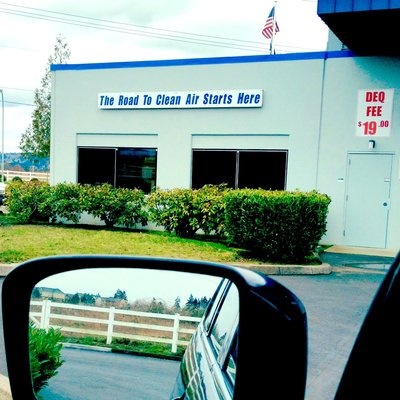An emissions test is an assessment of a vehicle’s pollution output under simulated driving conditions. Many countries set minimum emissions standards for vehicles and often also require vehicle owners to get tests done every year or every other year in order to be sure that all vehicles using the roads meet these standards. Around the world, at least 15 countries, including the United States, require vehicle emissions tests as a means of limiting and controlling air pollution. In the US, the Environmental Protection Agency (EPA) is the federal agency that regulates vehicle emissions. It set the standards for vehicle emissions and provides states with federal funding for low emission vehicle incentives and compliance programs.
Car emissions test is aimed at environmental and public health protection. We all know that cars emit a range of chemicals into the air as a consequence of burning fuel. And these chemicals include some pollutants like nitrogen oxides, carbon monoxide which are very harmful to people, animals and plants that are constantly exposed to them. Cars that fail usually have to undergo repairs or else stay off the roads. There may also be a fine levied against drivers whose cars fail.
The pollution from automobiles has become one of the leading causes of air pollution and climate change. Car emissions are the result of gasoline burning. When the fuel is burning, the pollutants such as carbon dioxide, nitrogen oxide, and other hydrocarbons are produced and belched out to the around atmosphere through the tailpipe. Environmental problems can also be caused when the fuel vapors generated with the heat from the running engine escape to the atmosphere.
Nowadays, car emission test comes in several different forms and the application rules vary from state to state. Traditionally, it refers to a lengthy tailpipe emissions test to verify emissions compliance. Many states now use a simple Onboard Diagnostics (OBDII) plug-in check. However, the OBDII tests are only used on 1996 and newer vehicles, and may be used in combination with a separate tailpipe test in certain situations. And it is always performed in an auto mechanic’s shop or repair garage.
The probable causes for a failed emission consists of eleven monitor, catalyst monitor, misfire, evaporative system, EGR system, fuel system, heated catalyst, secondary air system, comprehensive component, O2 sensor, O2 sensor heater and A/C system refrigerant. Here we’ll take six for specific explanations.
1. Fuel metering out of specification. The reason for this problem varies from a faulty computerized engine control, carburetor, to fuel injection unit.
2. Faulty O2 sensor. It is used to measures the amount of oxygen in the exhaust gas and once broken, can lead to other problems including overheating, higher toxic emissions and loss of acceleration power.
3. Defective ignition system. Defective ignition system affects the thorough and sufficient burning of the fuel-air mixture. The common causes include broken spark plugs wires, worn out spark plugs, over advanced ignition timing and a worn out distributor cap.
4. Rich or lean fuel mixture. In order to burn sufficiently and efficiently, a balanced mixture of fuel and air is required. Both rich and lean fuel mixture can create high CO level. Rich fuel mixture may be the result of a contaminated oxygen sensor, leaky injectors, or excessive fuel pressure while a lean one a vacuum leak, EGR opening up, a weak fuel pressure or dirty fuel injectors.
5. Malfunction in the air injection system. The air injection system helps the engine to properly control the levels of hydrocarbons and carbon monoxide emission by forcing fresh air into the exhaust of the engine.
6. Faulty evaporative emission control system. If the EVAP is faulty, gasoline vapors from the fuel system and tank can be released into the atmosphere. It can be caused by leaks in the vacuum hoses and vents, defective purge valves or faulty gas caps.

Possible causes for a car emission test failure
by
Tags:

Leave a Reply